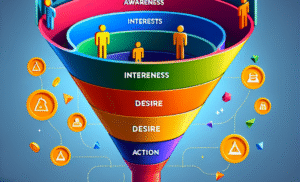Related Posts
Introduction
Understanding Google Ads
Key Features of Google Ads
- Search Network Advertising: Text ads appear atop or below organic search results for relevant queries.
- Display Network: Visual banner ads on a vast network of websites, apps, and videos.
- Video Ads: Ads on YouTube and across Google’s video partner platforms.
- Remarketing: Re-engages visitors who previously interacted with your website or app.
- Conversion Tracking: Measures actions users take after clicking your ad, such as purchases or sign-ups.
Advantages of Google Ads
- High Intent Audience: Users actively searching for products/services are more likely to convert.
- Extensive Reach: Billions of daily searches and a vast display network offer enormous exposure.
- Precise Targeting: Keywords, location, device, and demographic targeting help refine your audience.
- Measurable Results: Detailed analytics allow you to optimize campaigns effectively.
Challenges of Google Ads
Understanding Facebook Ads
Key Features of Facebook Ads
- Photo and Video Ads: Visually appealing ads that blend seamlessly into users’ feeds.
- Carousel and Collection Ads: Showcase multiple products or features in a single ad.
- Audience Targeting: Detailed options based on interests, behaviors, location, age, gender, and more.
- Lookalike Audiences: Reach new users similar to your existing customers.
- Retargeting: Engage visitors who have interacted with your brand before.
Advantages of Facebook Ads
- Advanced Demographic Targeting: Reach specific groups based on detailed user data.
- Cost-Effectiveness: Lower CPCs and CPMs compared to search-based advertising.
- Strong Visual Engagement: Creative ad formats help tell your brand story effectively.
- Access to Social Proof: Likes, comments, and shares increase ad credibility.
Challenges of Facebook Ads
Comparing Google Ads and Facebook Ads
1. Audience Intent and Purchase Funnel
2. Targeting Capabilities
3. Cost and ROI
4. Campaign Objectives and Suitability
5. Learning Curve and Management
Which Platform Is Better for Your Business?
- If your priority is immediate sales and capturing high-intent search traffic, Google Ads may be the better choice.
- If brand awareness, customer engagement, and interest-based targeting are your focus, Facebook Ads offer unparalleled demographic precision and creative options.
- Many successful marketers use both platforms in tandem, creating a comprehensive marketing funnel that nurtures leads and drives conversions at different stages.
Integrating Both Platforms for Maximum Impact
Additional Considerations
- Budget Allocation: Test both platforms to see which offers better ROI for your niche.
- Creative Assets: Facebook requires eye-catching visuals; Google relies on effective keywords and compelling ad copy.
- Ad Policies: Be aware of each platform’s advertising policies to prevent disapproval or account issues.
- Analytics and Optimization: Use platform-specific analytics tools to refine your campaigns continuously.
Final Thoughts
References and Resources
- Google Ads Official Site
- Facebook Ads Official Site
- Neil Patel’s Comparison of Google Ads vs Facebook Ads
- Moz’s Insights on Ad Platform Effectiveness
- WordStream’s Guide to Comparing Advertising Platforms
How to Perform a Website SEO Audit: A Comprehensive Guide to Boost Your Website’s Performance
Comments Off on How to Perform a Website SEO Audit: A Comprehensive Guide to Boost Your Website’s Performance
How to Rank Higher on Google in 2025: The Ultimate Guide to Boosting Your SEO Success
Comments Off on How to Rank Higher on Google in 2025: The Ultimate Guide to Boosting Your SEO Success
What Makes a Great Marketing Funnel? Unlocking the Secrets to Conversion Success
Comments Off on What Makes a Great Marketing Funnel? Unlocking the Secrets to Conversion Success
Using Chatbots to Increase Engagement: Unlocking the Power of AI in Customer Interaction
Comments Off on Using Chatbots to Increase Engagement: Unlocking the Power of AI in Customer Interaction



